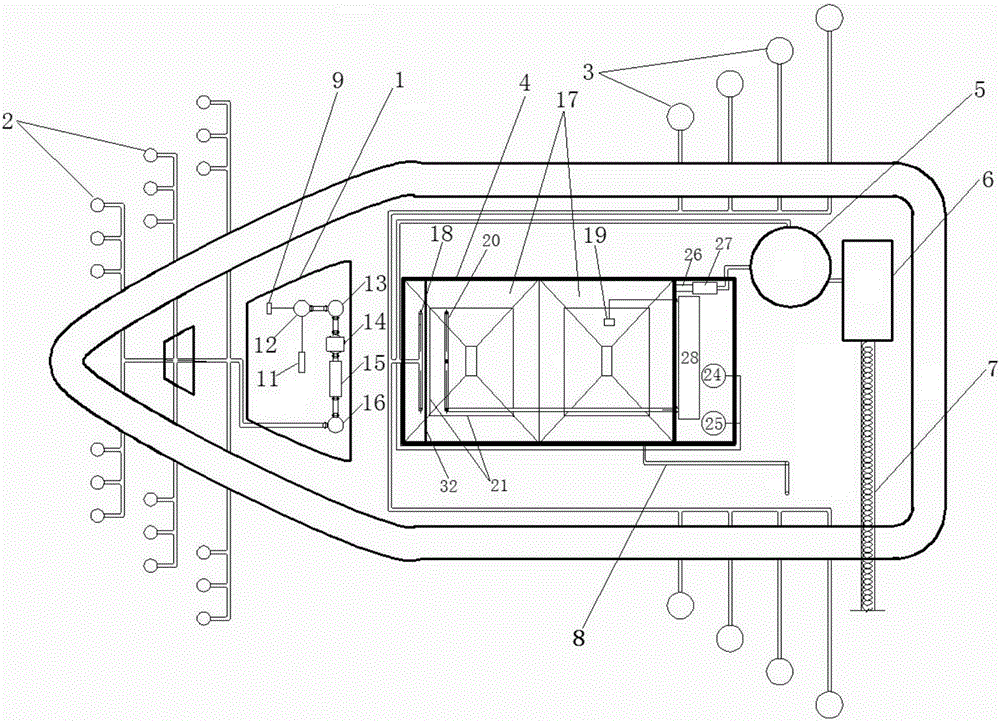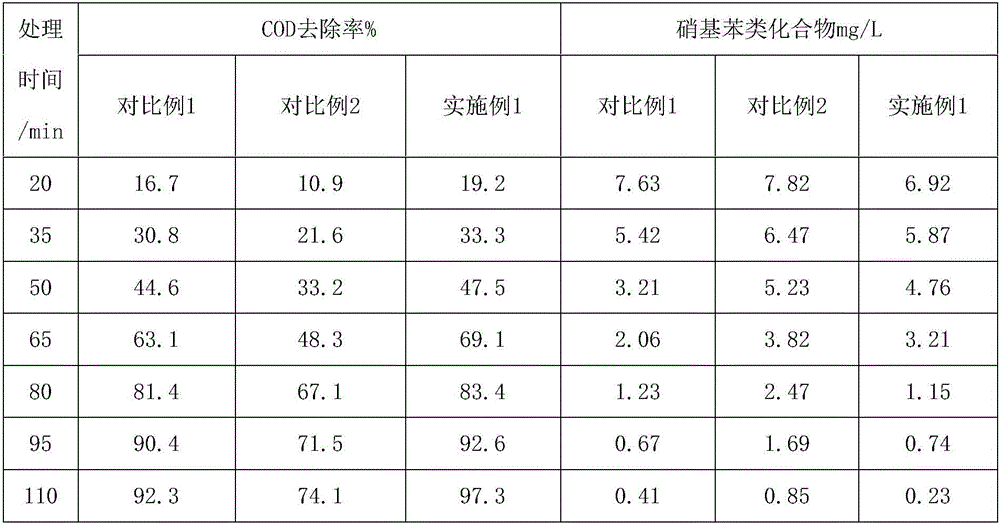Method and system for treating water pollution by utilizing in-situ micro-nano air flotation
A micro-nano, water pollution technology, applied in flotation water/sewage treatment, polluted waterway/lake/pond/river treatment, multi-stage water treatment, etc., can solve the problem of large water volume, low treatment efficiency, no catch etc.
- Summary
- Abstract
- Description
- Claims
- Application Information
AI Technical Summary
Problems solved by technology
Method used
Image
Examples
Embodiment 1
[0055] As shown in the figure, the system using in-situ micro-nano air flotation to treat water pollution includes micro-nano air flotation machine 1, high-efficiency microbubble matrix 2, water surface cyanobacteria collection matrix 3, air flotation-sedimentation integrated pool 4 and dehydration pool 5. The high-efficiency microbubble matrix 2 is arranged around and at the bottom of the system, and the cyanobacteria collection matrix 3 on the water body surface is arranged around the system. The air flotation machine 1 is connected to the high-efficiency microbubble matrix 2 through pipelines, the air flotation-sedimentation integrated tank 4 is also connected to the dehydration tank 5 through pipelines, the dehydration tank 5 is connected to the algal residue bagging machine 6, and the algae residue bagging machine 6 is connected to the Belt conveyor 7 is connected.
[0056] The micro-nano air flotation machine 1 includes a water intake shower head 9, an ozone generator I1...
specific example
[0065] 1. The polluted water source of Dianchi Lake can fully meet the standard of domestic water after being treated for 240 minutes in the first stage by the system of the present invention, and then treated in the second stage for 120 minutes.
[0066] project before processing The first level of water Second stage water Domestic Water Standard suspended matter 10 2 ≤1 _ Turbidity 27 6 ≤0.5 <3
Ammonia nitrogen 0.383 0.21 <0.025 0.5 Total Phosphorus 0.8 0.102 <0.01 0.02 COD 58 14 <1 <3 BOD 16 3 <1 _ Escherichia coli 1.59×10 7
1.0×10 3
_ Not allowed to check out algae inactivation rate 3.25 log _
[0067] 2. The polluted water source of Yilong Lake in Shiping County can completely meet the standard of domestic water after being treated for 240 minutes in the first stage by the system of the present invention, and then treated in the second stage for 120 minutes.
[0068] ...
PUM
| Property | Measurement | Unit |
|---|---|---|
| diameter | aaaaa | aaaaa |
Abstract
Description
Claims
Application Information
 Login to View More
Login to View More - R&D
- Intellectual Property
- Life Sciences
- Materials
- Tech Scout
- Unparalleled Data Quality
- Higher Quality Content
- 60% Fewer Hallucinations
Browse by: Latest US Patents, China's latest patents, Technical Efficacy Thesaurus, Application Domain, Technology Topic, Popular Technical Reports.
© 2025 PatSnap. All rights reserved.Legal|Privacy policy|Modern Slavery Act Transparency Statement|Sitemap|About US| Contact US: help@patsnap.com



